- Wastewater
- Posted
Sustainable Sewage
There’s rather more to designing a sustainable building than specifying low-embodied energy materials and making sure it will require little energy and maintenance in use. Low water demand and the ability to get the nutrients discharged in the sewage back to the land are important too.
The two main nutrients we need to be concerned about are phosphorus and nitrogen. There’s rather too much of both around at present for the good of the environment, particularly when they get into rivers and lakes. Apparently, thanks to vehicle emissions, more nitrogen compounds now come out of the air as acid rain and particles than farmers put on their fields in the 1950s. Indeed, a recent article in New Scientist quoted scientists as saying the build-up of man-made nitrogen compounds in water and in the air was a more serious threat than that posed by climate change. One of those interviewed called for a Kyoto-type agreement to limit the production of nitrogenous fertilisers.
Phosphate pollution presents a more localised problem than nitrogen but the effluent from sewage treatment plants and the run-off from farms caused serious algal blooms on the great West of Ireland lakes a few years ago. The situation has recently improved a little because many sewage works in the area have been equipped to remove phosphates. But the main source, the run-off from the land continues unabated and it is not clear what effect the single farm payment system will have. The optimists think that less fertiliser will be applied now that farmers get paid regardless of output, while the pessimists fear that as small farms are bought up and amalgamated, their new, younger, ‘more progressive’ owners will apply more fertiliser than the previous older ones did. Since a kilo of phosphate in water can produce half a tonne of vegetable matter, the knowledge that Irish farmers spread 96,000 tonnes of the stuff annually is rather alarming.

If space is really limited, you can opt for a "living wall" in which the plants grow in pockets, one above the other.
It’s therefore important to keep nitrogen and phosphorus out of water flows. However, in view of the excessive quantities of both that are about, it might seem odd to insist that all new buildings should be equipped to conserve and recycle both nutrients – unless, that is, the excess can be expected to disappear during the buildings’ lifespans. And that, of course, will almost certainly be the case. The output of nitrogenous fertilisers will be sharply reduced as natural gas supplies become scarce. Also, as oil output declines, smaller quantities of nitrogen oxides will come from vehicle exhausts. This will ease environmental pressures and farmers will revert to relying on legumes and animal wastes such as urine to put nitrogen into their soil.
With phosphorus, the problem is much more serious as there is no natural phosphorus cycle to return the nutrient to a depleted soil. Human intervention is necessary but, at present rates of extraction, the world’s reserves of phosphate ore will be exhausted in 130 years. That may seem a long time, but, as with all such ores, the richest sources are mined first and, as the years go by, it will take more and more energy to replace the 4-20 kg of phosphorus which every hectare of farmland loses annually depending on the crops or animals produced on it and sold away. Folke Gunther, a Swedish expert in this area, reckons that phosphate fertiliser prices could well increase 100-fold. “It’s no exaggeration to state that phosphorus is the most important nutrient” he says. “The world will never run out of it but if this generation disperses it, future generations may not have the energy to recover as much as they need.” The ability to recycle nitrogen and particularly phosphorus will therefore be crucial to the sustainability of future agricultural systems and every building going up now which is not connected to a public sewage system should be equipped so that can be done. Although it’s relatively easy to equip a rural house in such a way, only a single stand at the Self-Build exhibition at the King’s Hall in Belfast in February offered a suitable system. The other suppliers of treatment plants all seemed to be offering equipment which not only made nutrient recycling impossible but, with their pumps, blowers or revolving drums, required a constant supply of electricity – around 50 watts – and regular maintenance.
The key to sustainable sanitation is the source separation toilet, which keeps the urine and the faeces apart. Conveniently, almost 90% of the nitrogen and two-thirds of the phosphorus are in the urine so, if this is piped away to a storage tank, as done in the system offered by Herr Ltd of Dundalk at the Belfast show, it can be diluted and sprayed back on the land later on. “Urine is completely sterile” Ollan Herr, the company’s founder, told me. “The bacterial load is in the faeces. Even if there is some faecal contamination, if the urine stays in the tank for about six months it becomes very alkaline and any organisms are killed.” However, if it does become alkaline, the ammonia given off means that some of the nitrogen is being lost so Folke Gunther recommends adding sugar to keep it acid. “Keeping it cool, below 6 degrees C, helps too,” he says.

A diagram of the system used for cleaning grey water at Kalmar Technical High School, Sweden. Click to view large image.
Herr refers to the stored urine as ‘Miraclegrow’ because of its properties as a fertiliser when diluted 1:12 with water. He is currently advising the designers of a visitor centre at a distillery how the urine from the toilets can be used to grow flowers hydroponically. He would not use the water to grow anything that might be eaten because any hormones or antibiotics passed in the urine might still be present and get taken up by the plant. “You need soil bacteria to be sure that they are broken down,” he says. In Herr’s system, the faeces, paper and flush water are separated in a cyclone powered by the water itself, with the solid matter dropping into a composting chamber. After filling for three years, a second composting chamber is brought into use. By the time that the first one is required again, aerobic digestion and, later, earthworms have turned the contents into dark, sweet-smelling crumbly compost. “It’s perfectly dry and safe to put around trees and flowers in the garden” Herr says. The flush water itself can go straight into a reed bed, along with the grey water from the house.
“The system needs much less care than either a septic tank or one of the new electro-mechanical systems” Herr claims. “Septic tanks should be emptied every two years but very few people do this with the result that they stop working properly and the effluent becomes smelly. The electro-mechanical systems don’t work if the power fails. They need emptying every five years and have motors and other moving parts to go wrong. That’s scarcely sustainable.”

Folke Gunther also believes in source separation toilets, but he prefers the dry type which are frequently installed in Sweden. He is scathing about the conventional method of wastewater treatment which he calls MIFSLA for Mix First, Separate Later.
He describes it as follows:
1. Drinking water is mixed with urine and faeces to become a polluted and polluting mixture of plant nutrients and pathogens.
2. This mixture is in turn mixed with fairly clean grey water from baths and sinks.
3. The resulting mixture is diluted with drainage water as it passes through an extensive web of sewage pipes. The initial amount of wastewater (more than 170 litres per person a day) can be doubled by the drainage water.
4. Finally, the mixture is purified until its quality is comparable with that of the original grey water, but there is twice as much to treat.
“The actual function of the conventional wastewater treatment system turns out to be the removal of urine and faeces from the grey water, a job that can be more easily done by using source-separating toilets” he says.
“Comparatively clean grey water, which is easy to purify, is heavily polluted by its mixing with urine and faeces. The end product of a wastewater treatment plant is a contaminated, phosphorus-rich sludge and contaminated water. The phosphorus is, on the whole, impossible to recycle.”
Gunther has been developing alternatives to reed beds for dealing with grey water. One of these is the wetpark which can be built on any scale. The 500-student technical high school in Kalmar in Sweden has one in its grounds. “It covers the same area of land as the school itself. The students have access to it at break times” Gunther says. The building is equipped with source separating toilets and worm-composting units for faeces digestion. The urine is transported to a local farm. After purification in the wetpark, the water is used in the building again. You can put a wetpark in the garden of a private house, or, if space is really limited, you can opt for a “living wall” in which the plants grow in pockets, one above the other. “With both the reed bed and the living wall you need to cut and remove the growth regularly, you know” Gunther says. “It is the plants that take up the nutrients and, if they are not cut, you eventually get to the stage that there’s no net new growth and that they don’t take up any more.”

Human excreta can even be recycled inside buildings using the “living machines” developed by John Todd in the US. These essentially turn Gunther’s ponds into tanks in which a wide range of plants are grown, and install them in a greenhouse or some other building with a lot of natural light. By the time the effluent reaches the final tank, fish can be kept in it as it is almost drinking water quality. It was planned that a living machine would treat the black water from the Emerald Housing Project, a development of 37 social and affordable houses and apartments at Ballymun, but Dublin City Council rejected that part of the application, and now only rainwater from the roofs and grey water will be treated in it.
“The council told us that Ballymun was fully-sewered and it could not see the sense in our treating the black water on site rather than letting it go to its treatment works at Ringsend” the architect Brian O’Brien of Solearth Architects says. “However, we’ve calculated that it takes less energy to treat on site and doing so means that we can re-use the water for flushing toilets right there, saving the city the cost of supplying drinking-quality water for that, too.”
The living machine will be housed on three floors of a community building and the lowest floor will be available for residents to use as an extra community space. “It will be a pleasant, warm room with tubs of vegetation where people can meet friends or sit with young children” O’Brien says.

O’Brien decided not to use source separation toilets for the project as he thought they might not prove acceptable to every tenant. This means that very little nutrient recycling will be possible. The sludges from the tanks in the living machine will go into the sewer, along with any water that passes through it that is not required for toilet flushing. Nevertheless, the fact that planners and others will be able to see a living machine working should give them confidence to allow black water to be treated in later projects.
The Ballymun development is a demonstration project which has attracted a lot of grant-aid for its innovative features, which extend far beyond water treatment. In the wider world, financial incentives will be necessary for full, on-site waste treatment to come into common use. “If householders had to pay directly for the amount of water they use and for the load they place on the public sewer system, there would be a lot more interest in independent water treatment systems” O’Brien says.
- Articles
- wastewater
- Sustainable Sewage
- energy
- treatment
- sewage
- phosphorus
- nitrogen
- sanitation
- Richard Douthwaite
- Feasta
Related items
-
 The world energy crisis 2022
The world energy crisis 2022 -
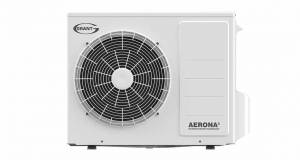 Grant heat pumps at centre of NI energy transition project
Grant heat pumps at centre of NI energy transition project -
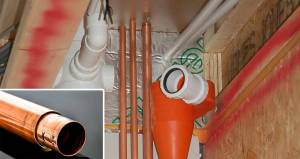 Learn about wastewater heat recovery remotely
Learn about wastewater heat recovery remotely -
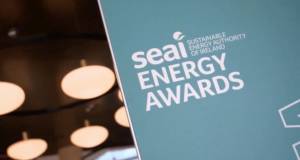 SEAI Energy Awards 2020 open for entries
SEAI Energy Awards 2020 open for entries -
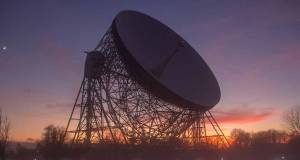 The Jodrell Bank grand challenge
The Jodrell Bank grand challenge -
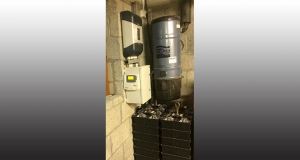 Use all your solar electricity at home rather than export it — Warik Energy
Use all your solar electricity at home rather than export it — Warik Energy -
 SEAI Energy Show to take place on 6 & 7 April
SEAI Energy Show to take place on 6 & 7 April -
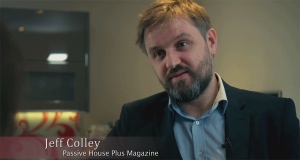 Passive House Plus editor explains passive house to RTE's Eco Eye
Passive House Plus editor explains passive house to RTE's Eco Eye -
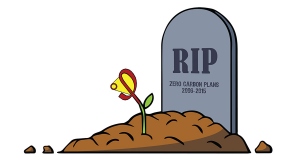 Could the death of zero carbon help passive house bloom?
Could the death of zero carbon help passive house bloom? -
 Ireland’s energy roadmap — have your say
Ireland’s energy roadmap — have your say -
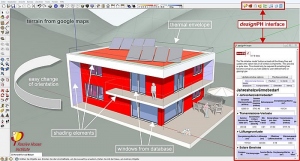 Passive House Institute launches 3D design tool
Passive House Institute launches 3D design tool -
 Glen Dimplex open new Irish R&D facility
Glen Dimplex open new Irish R&D facility


